
Smart home trends: discovering the connected home of the near future
Intelligent robotic vacuum cleaners, smart radio sockets and intelligent voice assistants: more and more networked products and technologies are nesting themselves in our homes. However, the potential of the smart home trend is far from exhausted.
The urge to be able to do everything via mobile phones also affects the smart home sector. From shutters that you raise and lower from a distance through heating controlled by automated profiles to refrigerators that send you pictures from inside: your smartphone no longer only controls your messages, calls and contacts, but also your home. Even if the trend, products and technologies aren't new, the world of smart homes is largely unexplored. An option which shouldn't be missing from any future smart home ecosystem in my opinion.
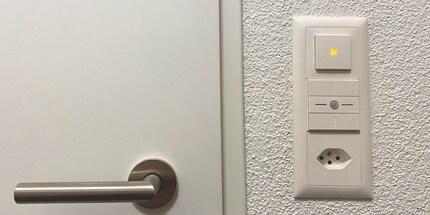
Emerging from the cloud
Voice assistants such as Google Assistant or Amazon Alexa are to become more independent. Manufacturers of intelligent assistants are trying to decouple their clever little helpers from the cloud. Today, all voice commands received by a speaker are forwarded to a cloud, where they're analysed by AI and sent back with a corresponding response. The whole thing works quite well, assistants are able to learn and even understand some Swiss-German terms. But without an Internet connection, smart homes are useless: in this case, an omniscient assistant is only suitable as a mediocre Bluetooth speaker at best.
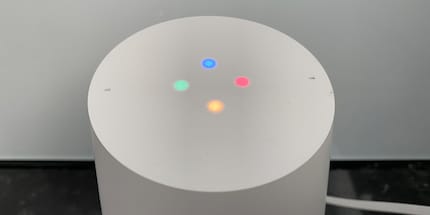
In the near future, manufacturers are therefore considering outsourcing the AI or at least parts of it to chips and installing them directly in the loudspeakers. As a user, you'll benefit from being able to access all the functions stored on the chip even when you aren't connected to the Internet. For the time being, these will probably only be basic functions. Storing all the information from the cloud on a chip is still a bit far-fetched at the moment. But the fact that Google already presented their first device with its own AI chip in the Nest Mini at the end of 2019 shows how important it is for manufacturers to break away from the cloud.
Mesh as a home network standard
Device networking and radio standards are two central pillars when it comes to maintaining a functioning smart home. But it is these two pillars that often prove to be the most fragile in everyday life. For many users, keeping track of which products are compatible with what is too complicated. This slows down introduction of further devices into the smart home universe as well as their spread to other households. For example, if you extend the range of your Cablecom or Swisscom router with repeaters, you'll get a second network name. Then, if you want to use an Alexa-compatible smart home device, your smartphone, Amazon Echo and the device you want to add must be on the same network.
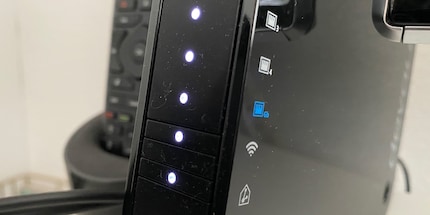
If you use a mesh system for your Wi-Fi network, such problems are irrelevant. This eliminates isolated single repeaters that generate a new network when the range of your router is limited. In a mesh network, several routers are installed that work together and mutually amplify the signal. They can be found under the same network name, which is particularly important for smart home devices. Sooner rather than later, all manufacturers will therefore ensure that their routers, repeaters and powerline products are equipped with the ability to function as or at least in a mesh network. Positive examples to mention here are Google and Amazon: with Nest Wifi and the eero respectively, they have already equipped their current product line with this functionality.
The more unique, the better
Digital language assistants can already do a lot right out of the box. Since they're capable of learning, new knowledge is added with every question you ask them. You can tell them your name, they even know where you live and recognize your voice. They listen, get to know you and your everyday life. Whether you like it or not, you establish a relationship with your language assistant over time. They develop their own personality on the inside, even if they all look the same externally. Many users therefore want their digital assistant to be personalised, audio and aesthetics included. Not only your car, pet or mobile phone should be unique, but your language assistant as well.
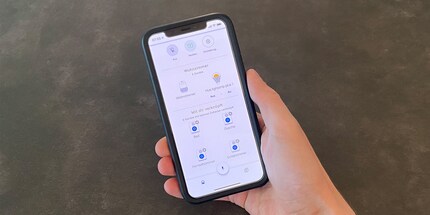
The whole thing can be compared to a self-built PC: you choose the colour of the case according to your tastes. Via cable sleeving, you decide if and how the LEDs should light up and how much power the box should have. Because it's your computer and it should be unique. This fact opens new doors for manufacturers of smart voice assistants. Instead of selling you just one model, you can change the colour, material and size. For this reason, Google already introduced a male voice for the Google Assistant in autumn 2019. Amazon also allows Alexa users to adjust the speaking rate according to their preferences.
The smart home on the road
Voice assistants don't only work via a smart loudspeaker. You can also control them with the appropriate app on your phone. If you want to activate the assistant via Bluetooth headphones, for example, the voice assistant and – depending on the manufacturer – even the headphone app must be installed on the smartphone. You also need to connect the headset to your phone and set it up in the Voice Assistant app. You take the smartphone out of your pocket, command the assistant to listen to the headphones and they'll answer all your questions. The same process and therefore the same hurdles apply to a smartwatch without eSIM functionality. You're dependent on a mobile phone in both cases.
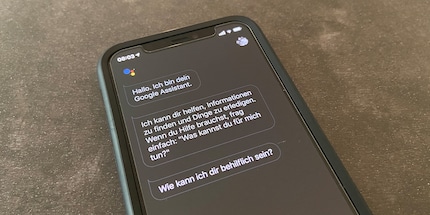
This is where innovative headphone and smartwatch manufacturers come in. The first models with a built-in AI chip are to be produced soon – just like smart loudspeakers. The user communicates with the cloud via a mobile phone connection and directly via the headphones. This way, you can make calls or stream your favourite music using voice commands without having to carry a smartphone. Plus, you don't have to install apps or press buttons, just speak your commands directly into the headphones. For advanced smart watches, an eSIM takes over this function. Amazon presented the Echo Buds at the end of 2019, the first in-ear headphones with an integrated chip. They still need to be paired with a smartphone, but Alexa listens to your commands without the need to press any buttons or use an additional app.
Fitness more important than data protection
In their early days, intelligent voice assistants were mainly used for entertainment and as a cool gadget. Data protectionists were sceptical and still are. These devices listen to you and your activities without pause if their microphone isn't explicitly switched off. However, trends towards increasing health awareness and desired self-optimisation are leading to these concerns being increasingly detached and reduced. Since smart speakers are now much more than just a gimmick, the benefits outweigh the potential danger and risks for many users. After all, you want to know how many steps you took yesterday and how many calories you burned. The fact that Google and co. are tracking you all the time is becoming less and less important.
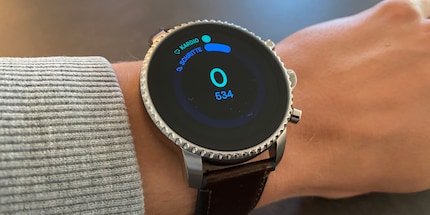
The latest smartphones, smart watches and fitness trackers take advantage of exactly this trend. They give health tips, suggest training activities and warn against heart attacks. They do all this by measuring your pulse, knowing your routines and storing your personal data. Apple is in prime position with its fifth generation of Apple Watches. From ovulation tracking through warnings regarding hearing damage from excessive noise to heart rate monitoring: Apple smartwatches take care of your health for you. More and more fitness trackers and health apps for your mobile phone underline the importance of this trend.
Scenes instead of single products
Currently, smart home newcomers in particular think in terms of individual devices. A newbie will be happy if they succeed in telling their Google Assistant to turn on the Philips Hue lamp in the living room. Or if they manage to have their favourite radio station played on their Sonos speaker in the kitchen. However, as more and more products become smart home-capable, the trend is moving away from individual devices and towards smart home scenes. Even refrigerators, washing machines and dishwashers are becoming intelligent and can be controlled remotely. This opens up possibilities that go far beyond the functions of a smart product.

In concrete terms, this means that not just one lamp is turned on or a single song is played. The user tells their Google Home to start off the day. This morning scene involves the Philips Hue lights coming on, your favourite radio station playing, the coffee machine heating up, the shutters rolling up and the floor warming up. As soon as the weather outside exceeds a certain temperature, the shutters close automatically, heating is turned down and the refrigerator tells the built-in ice cube dispenser to prepare for a hot afternoon. The fact that even furniture stores like IKEA are teaming up with Sonos to make parts of their product line smarter is an indicator of the scope of this trend.
Quo vadis, smart home?
Technology is developing so fast that nobody knows what tomorrow will bring. Since the smart home industry is dependent on technological development, new gadgets and mutual compatibility, only vague forecasts are possible in this area as well. Even experts cannot predict which trend will establish itself or whether it will remain a «one hit wonder». Because details depend on many external factors. However, more general statements are possible: the currently still scattered smart home universe will grow ever larger the longer it keeps going. In other words, a uniform standard for all smart home solutions should emerge. It's unclear when this will happen. This is because manufacturers want their products to be able to interact with other systems. But they're just as interested in selling their own products – especially to users who already use the same standard.
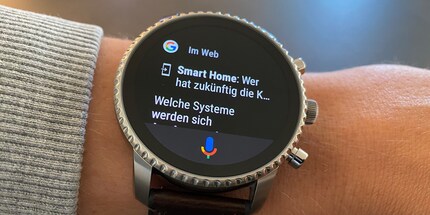
What do you think will shape the smart home scene in the coming months and years? What technologies and products for a connected home do you think will be in vogue in the near future? Off to the comments. Furthermore, if you don't want to miss any more trends surrounding the digital home and other smart home articles, follow me by clicking the «Follow author» button at my author profile.
When I'm not stuffing my face with sweets, you'll catch me running around in the gym hall. I’m a passionate floorball player and coach. On rainy days, I tinker with my homebuilt PCs, robots or other gadgets. Music is always my trusted companion. I also enjoy tackling hilly terrain on my road bike and criss-crossing the country on my cross-country skis.
From the latest iPhone to the return of 80s fashion. The editorial team will help you make sense of it all.
Show all